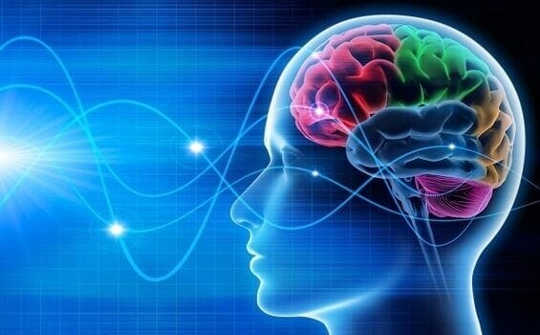
Researchers have uncovered the key brain mechanisms for organizing memories in time.
The new study details the discovery of the fundamental mechanisms by which the hippocampus region of the brain organizes memories into sequences and how this can be used to plan future behavior.
The finding may be a critical early step toward understanding memory failures in cognitive disorders such as Alzheimer’s disease and other forms of dementia.
Combining electrophysiological recording techniques in rodents with a statistical machine learning analysis of huge troves of data, the researchers uncovered evidence suggesting that the hippocampal network encodes and preserves progressions of experiences to aid in decision-making.
“Our brain keeps a pretty good record of when specific experiences or events occur. This ability helps us function in our daily life, but before this study, we didn’t have a clear idea of the neuronal mechanisms behind these processes,” says corresponding author Norbert Fortin, associate professor of neurobiology and behavior at the University of California, Irvine.
“Where it connects with everybody is that this type of memory is strongly impaired in a variety of neurological disorders or simply with aging, so we really need to know how this brain function works.”
The project, which took more than three years to complete, involved experimental and data analysis phases. The researchers monitored the firing of neurons in rats’ brains as they underwent a series of odor identification tests. By presenting five different smells in various sequences, the scientists were able to measure the animals’ memory of the correct sequence and detect how their brains captured these sequential relationships.
“The analogy I would think about is computing,” Fortin says. “If I were to stick electrodes in your brain—we can’t; that’s why we use rats—I could see which cells are firing and which ones are not firing at any given moment. That provides us with some insight into how the brain represents and computes information. When we record activity patterns in a structure, it’s like we’re seeing zeros and ones in a computer.”
Obtained in millisecond intervals over several minutes, neuronal activity and inactivity measurements present a dynamic picture of the brain’s functioning. Fortin says that he and his colleagues were, in some ways, able to “read the minds” of their subjects by viewing the “coding” of the cells—which ones were firing and which were not—in rapid succession.
Moving Quickly
“When you’re thinking about something, it moves quickly,” he says. “You’re not stuck on that memory for long. Right now, it’s being represented, but we can see how that changes very quickly.”
Fortin knew early on that the readings of hippocampal activity would result in enormous quantities of raw data. From the beginning stages of the project, he enlisted the participation of statisticians in the Donald Bren School of Information & Computer Sciences.
“The neuroscience questions we had at the time in my lab were way too advanced for the statistical knowledge we had. That’s why we needed to involve partners with data science expertise,” Fortin says.
“These emerging neuroscience studies rely on data science methods because of the complexity of their data,” says senior coauthor Babak Shahbaba, professor of statistics. “Brain activities are recorded at millisecond scale, and these experiments run for more than an hour, so you can imagine how fast the amount of data grows. It gets to a point that neuroscientists need more advanced techniques to accomplish what they had imagined but weren’t able to implement.”
He notes that when neurons encode information such as memories, scientists can get a glimpse of that process by examining the pattern of spiking activity across all recorded neurons, known collectively as an ensemble.
“We found that we could treat these neural patterns as images, and this unlocked our ability to apply deep machine learning methods,” Shahbaba says. “We analyzed the data with a convolutional neural network, which is a methodology used frequently in image processing applications such as facial recognition.”
This way, the researchers were able to decode the firing of neurons to retrieve information.
“We know what the signature for odor B looks like, just as we know the ones for A, C, and D,” Fortin says. “Because of that, you can see when those signatures reappear at a different moment in time, such as when our subjects are anticipating something that has yet to happen. We’re seeing these signatures being quickly replayed as they’re thinking about the future.”
Shahbaba says that the tools and methodologies developed during this project can be applied to a wide range of problems, and Fortin may extend his line of inquiry into other brain regions.
About the Authors
The work appears in Nature Communications.
Funding came from the National Institutes of Health, the National Science Foundation, and the Whitehall Foundation.
Source: UC Irvine
Books on Improving Performance from Amazon's Best Sellers list
"Peak: Secrets from the New Science of Expertise"
by Anders Ericsson and Robert Pool
In this book, the authors draw on their research in the field of expertise to provide insights into how anyone can improve their performance in any area of life. The book offers practical strategies for developing skills and achieving mastery, with a focus on deliberate practice and feedback.
Click for more info or to order
"Atomic Habits: An Easy & Proven Way to Build Good Habits & Break Bad Ones"
by James Clear
This book offers practical strategies for building good habits and breaking bad ones, with a focus on small changes that can lead to big results. The book draws on scientific research and real-world examples to provide actionable advice for anyone looking to improve their habits and achieve success.
Click for more info or to order
"Mindset: The New Psychology of Success"
by Carol S. Dweck
In this book, Carol Dweck explores the concept of mindset and how it can impact our performance and success in life. The book offers insights into the difference between a fixed mindset and a growth mindset, and provides practical strategies for developing a growth mindset and achieving greater success.
Click for more info or to order
"The Power of Habit: Why We Do What We Do in Life and Business"
by Charles Duhigg
In this book, Charles Duhigg explores the science behind habit formation and how it can be used to improve our performance in all areas of life. The book offers practical strategies for developing good habits, breaking bad ones, and creating lasting change.
Click for more info or to order
"Smarter Faster Better: The Secrets of Being Productive in Life and Business"
by Charles Duhigg
In this book, Charles Duhigg explores the science of productivity and how it can be used to improve our performance in all areas of life. The book draws on real-world examples and research to provide practical advice for achieving greater productivity and success.























